Lecture
Methodology of pedagogical science and activity
In pedagogy, along with the concept of methodology, there is the concept of methodology. External similarity and common sense of the basis of activity often leads to some confusion, confusion of these concepts. Thus, in a number of dictionaries, as one of the lexical meanings of the word methodology, it is indicated that it is “the same as the methodology”.
With regard to pedagogy, this is unacceptable, because in the structure of the pedagogical sciences there are many private methods of training and education, and therefore the terms methodology and methodology are demarcated quite clearly. The technique is usually understood as a set of methods, techniques for the practical implementation of something or the concretization of a separate method, while the methodology is the scientific basis of the activity.
The structure of methodological knowledge can be divided into two parts: the descriptive (descriptive) and prescriptive (normative) parts. Descriptive methodology describes the scientific approaches, concepts, principles, methods and means of activity. Prescriptive methodology characterizes the content of the activity, the sequence of the main stages and individual actions, contains instructions and norms of activity.
Studying the methodology in the course of theoretical pedagogy, it should be remembered that the meaning of the notion of pedagogical methodology includes two aspects: the methodology of pedagogical science (scientific and pedagogical research) and the methodology of pedagogical activity (practical work of a teacher: teacher, teacher, educator).
Methodology of pedagogical science is a set of principles for the construction of research activities in the field of pedagogical sciences, optimization of methods and means of organizing pedagogical research.
The presence of our own methodology is a condition for the development of any science, since the “engine” of this development is precisely scientific research that enriches science with new knowledge and expands its scope of application (Fig. 2.1).

Fig. 2.1. The role of scientific methodology in the development of science
Some provisions of methodological knowledge are common to a number of sciences, others reflect the specifics of a particular science. The following levels are distinguished in methodological knowledge (E. G. Yudin): philosophical, general scientific, concrete scientific, technological (see Fig. 2.2).
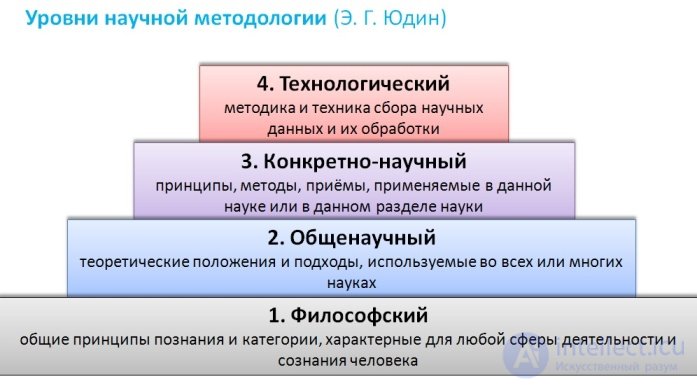
Fig. 2.2. Levels of scientific methodology
Methodology of pedagogical activity can be defined as a set of principles for the construction of pedagogical activity, optimization of methods and means of its implementation.
Methodologies of pedagogical science and pedagogical activity are inextricably linked with each other by the commonness of the objects and phenomena covered by them. The relationship between the methodology of pedagogical science and pedagogical activity is schematically shown in Fig. 2.3.
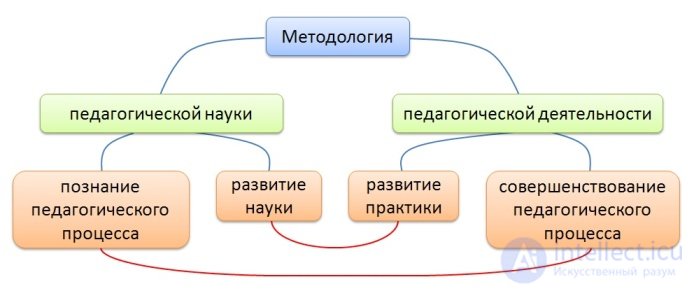
Fig. 2.3. Interrelation of pedagogical science methodology and pedagogical activity
So, if pedagogical science as a whole is oriented towards the knowledge of the pedagogical process, then pedagogical activity is oriented towards its practical implementation. They are based on some general approaches (personal, activity, etc.), and the methods of cognition developed by science (observation, questioning, diagnostic conversation, etc.) are used in pedagogical activity.
To the top
Methods of pedagogical research
Methods of pedagogical research are ways of studying pedagogical reality. There are several approaches to the classification of pedagogical research methods. According to one of them [2], methods of pedagogical research are divided into empirical (methods of studying pedagogical experience), theoretical (methods of theoretical research) and mathematical (statistical).
The main methods of pedagogical research are presented in the following diagram (Fig. 2.4).
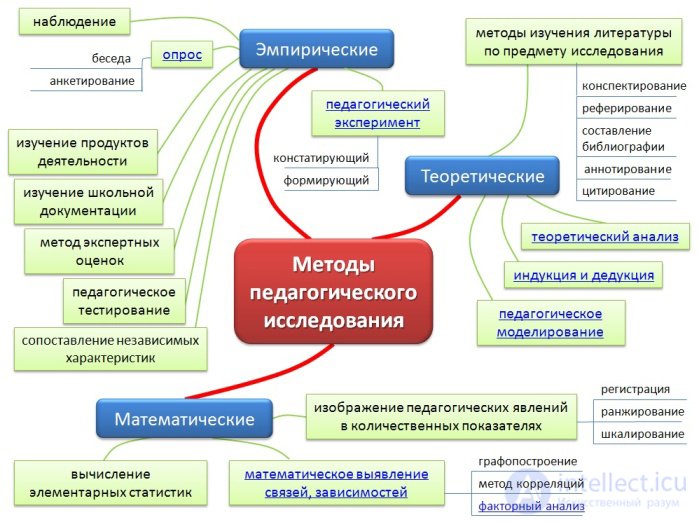
Fig. 2.4. Methods of pedagogical research
Any method of pedagogical research is not universal, each of them is effective only when used correctly. The correctness of the method implies two aspects:
- possession of this method;
- the ability of the researcher to choose the most effective method based on the existing research conditions, specific research objectives.
When choosing methods of pedagogical research, one should be guided by the following principles:
The characteristics of some methods of pedagogical research are presented below.
To the top
Empirical methods of pedagogical research
Empirical methods include observation, conversation, questioning, pedagogical testing, the study of school documentation, the study of products of activity . Their common feature is the focus on the direct study of the controlled object, the collection and systematization of factual material about the process and the results of the work of the educational system. The empirical nature of knowledge inherent in the methods of this group is an important prerequisite for the reliability of the facts identified.
Observation is the most common empirical method by which an object is studied in various conditions without interfering with its existence. Observation is widely used at the household level, providing information about the spontaneous process of cognition. However, during spontaneous observation, due to the peculiarities of human attention, many details from the observer escape, and other details are quickly forgotten, without forming a complete system of knowledge about the object. Observation as a method of pedagogical research is purposeful, it is carried out according to a certain plan, its results are recorded, and at the end of observation the collected data are summarized.
The advantages of observation include its availability and the ability of the researcher himself to become directly acquainted with the subject being studied.
The disadvantages of observation in pedagogical research are that ...
- the personal characteristics of the observer, his interests, beliefs and stereotypes strongly influence the accuracy of the results;
- the reliability of the results obtained is directly proportional to the duration of the observation (the longer the observation was made, the more statistically more reliable the data obtained with its help);
- by personal observation it is physically impossible to capture all the moments of the process being studied, which means that many facts will still remain unspecified.
Questioning is a method of gathering information using questionnaires, specially designed questionnaires to which written answers are required.
The main types of profiles:
- open (respondents must formulate a response on their own);
- closed (respondents must choose the most appropriate answer from several ready-made options);
- mixed (combined), providing for the possibility of a choice of ready-made options, as well as independent formulation of the answer.
Questioning is most effective if you want to identify a collective opinion on any issues and the needs of a significant number of people. Depending on the purpose of the survey, teachers, students, their parents, representatives of the nearest social environment may be subject to questioning. Applying this method, it should be remembered that the results of the survey, even those obtained on large samples, reflect the opinions, attitudes, stereotypes of thinking and perception of the respondents, the characteristics of this social group, and therefore they can significantly differ from the established scientific facts.
With the help of a questionnaire, a relatively large number of people can be surveyed for a relatively short period of time, and the standard wording of the questions in the questionnaires makes it relatively easy to process the data. However, the questioning eliminates the possibility of correcting the wording of questions. Therefore, an important condition for the effectiveness of this method is the sufficient quality of the questionnaire used (clarity for the respondent essence of the questions, the opportunity to give unambiguous answers to them or choose an acceptable answer from the proposed alternatives, as well as avoidance of questions provoking knowingly false answers). When conducting mass surveys, the factor that reduces the truthfulness of the answers becomes the opinion of other people (for example, filling out a questionnaire simultaneously with other people, a person can write off the answer from a neighbor so that they do not stand out, or vice versa: answer differently from the desire to differ, but not because he really thinks otherwise).
Conversation (diagnostic conversation) - a method in which the receipt of information occurs in the mode of individualized dialogue. Like any method, the conversation has a specific purpose, and its results are analyzed. Like the survey, it is conducted on the basis of pre-designed questions, but the wording and the sequence of questions are not strictly asked, they can vary. The conditions of success of the conversation include its individual character (“one-on-one”), the concentration of the researcher on the interlocutor, the creation of a trusting environment, the ability of the researcher to stimulate the speech activity of the respondent, without distracting from the research goal.
Conversation as a method of research, as compared with questioning, has a number of advantages due to direct contact with the person being surveyed. These include features:
- manage the influence of external irritating factors on the answers of the respondent (avoid the presence of third parties; choose the most appropriate setting, lighting, time; change intonation when formulating questions, etc.);
- change the wording of questions in the course of the survey, making them more “convenient” for the respondent;
- ask clarifying questions, seeking more specific answers;
- use non-verbal communication channels to create a setting for sincere answers;
- track information that is transmitted to respondents through non-verbal channels of communication (for example, by the characteristic gestures, gaze, posture of a person during a conversation, his emotional state can be identified, and the insincere answers can be recognized);
- situationally expand or narrow the range of questions, depending on the nature and amount of information that the respondent owns and is willing to share at the moment.
The disadvantages of the diagnostic conversation are related to the individual nature of the survey carried out with its help. In contrast to the survey, the conversation is not suitable for mass surveys. To conduct a conversation, a certain psychological attitude is needed, which implies a special choice of place and time, as well as the undesirability of an open recording of the received answers. In addition, the success of this method depends on the level of communication skills of both participants in the conversation. Finally, the considerable variability of the wording of questions and answers makes it difficult to process the results of the conversation.
Studying school documentation (school regulations, student personal records , diaries, medical records, work plans, class magazines, reports, analysis, etc., as well as financial and business documentation) allows you to cover a significant amount of data. This advantage is complemented by the convenience of searching and processing the necessary information, which is presented in documents in a systematized form and, as a rule, in standard forms. Another advantage of the method of studying school documents is due to the rather long periods of archival storage of a number of school documents: the possibility of referring to the past documented experience and finding in it the causes of today's problems and ways to resolve them.
Disadvantages of the school documentation study method manifest themselves mainly in two aspects:
- standardization and business style of documents impose strict restrictions on the nature and number of documented facts, as a result of which the facts that do not appear in the document remain outside the field of view of the researcher, namely, they may be especially important for learning new properties and phenomena in the object under study;
- the document may contain distortions of facts that mislead the person studying the document (the actual accuracy of the documents may suffer, for example, due to the desire to "seem better than it really is" or due to elementary negligence in keeping records).
The study of products of activity is a method in which the subject of study are essays, drawings, wall newspapers, crafts and other student work, as well as products of the activities of adults in the educational process. So, in addition to various student works, the subjects of study can be: elements of aesthetic design of a class room, made by the teacher personally or with his participation, under his leadership; products of activity, reflecting the hobbies of teachers, passions of parents and family hobbies, as well as various kinds of achievements, etc.
The products of the activity are material, their presence and quantity are easy to check, unlike their fixed documentary reflections, in which the descriptions of the objects may well not reflect some of the currently important parameters, and quantitative indicators may be accidentally or intentionally distorted. The need for this method in pedagogical research is also determined by the fact that with its help it is possible not only to establish the presence and quantity of the products of an activity, but also to identify specific properties characterizing the personality of the subject who created this or that product.
Pedagogical testing is a method in the process of application of which the subjects perform certain actions on the task of the examiner. At present, a lot of test methods have been developed for the school, which make it possible to identify the level of training in various subjects, the level of personal development of students and teachers, to study and evaluate the abilities, interests and needs of participants in the educational process. Computer testing is becoming increasingly widespread, making it possible to significantly simplify and speed up the verification and initial processing of results.
The pedagogical experiment is a special method of empirical research, consisting in the fact that the researcher intervenes in the pedagogical process in order to create the best conditions for the study of pedagogical phenomena. There are two types of pedagogical experiment: ascertaining and formative (transformative). In the ascertaining experiment, the specially created conditions make it possible to reveal new facts. In the case of the formative, to change the course and result of the pedagogical process.
To the top
Theoretical methods of pedagogical research
To the theoretical methods of research include the study of literary sources , theoretical analysis , methods of logical generalizations and modeling .
The study of literary sources in the pedagogical study allows you to find and select the necessary information. Subjects to study when using this method are scientific and methodological literature, regulations in the field of education, educational standards, model curricula and programs, as well as a variety of electronic documents. In the implementation of this method, traditional methods of working with literature are used: note-taking, abstracting, compiling a bibliography, annotation, quoting, drawing up logical schemes of the text. In addition, when studying electronic documents, it is possible to completely copy and save the source on an accessible medium, compress and archive the document, print out the entire document or its fragment (for example, table of contents, e-mail address or attached annotation), search for data by keywords, etc.
Теоретический анализ как метод познания предполагает осмысление результатов исследования на основе теоретических постулатов и моделей, разработанных педагогической наукой.
При теоретическом анализе полученные эмпирическим путём данные могут:
- сопоставляться с научно обоснованными и многократно подтверждёнными на практике фактами;
- сравниваться с данными того же класса, полученными ранее в этой же или подобной системе;
- соотноситься с целями и задачами управляемого процесса;
- осмысливаться как конечные или промежуточные результаты некоторой деятельности;
- обобщаться в виде кратких выводов.
Результатами теоретического анализа могут быть:
- установление степени достоверности полученных данных;
- выявление сходств и отличий, соответствий и несоответствий в анализируемой информации;
- выявление тенденций;
- forecasting the further development of the managed object;
- determination of the most effective methods of cognition and transformation of certain control objects, parts of the controlled process;
- justification of existing contradictions, problems and possible ways to resolve them.
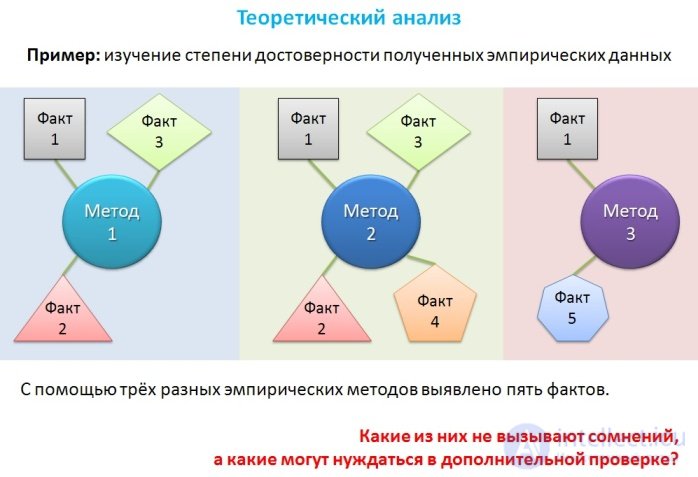
Fig. 2.5. An example of the use of theoretical analysis
Comment on rice. 2.5. Факт 1 подтверждается всеми тремя методами, значит, он проявляется устойчиво, а информация, свидетельствующая о его наличии, наиболее достоверна. Факты 2 и 3 установлены двумя методами из трёх, что значительно снижает вероятность ошибки в получении и обработке данных, однако достоверность этих сведений не столь высока, как у предыдущего факта. Факты 4 и 5 зафиксированы лишь одним методом из трёх. Достоверность этих данных требует уточнения: возможно, что эти факты единичны и в целом не влияют на общую картину состояния управляемого объекта, но может оказаться, что некоторый факт достоверно установлен лишь одним из нескольких применённых методов потому, что остальные методы просто не рассчитаны на выявление подобных фактов. В каждом из этих случаев недостаточно просто зафиксировать факт, необходимо ещё и теоретически осмыслить связи, которые позволили его обнаружить.
Индукция и дедукция являются методами логических обобщений . Индукция как путь от частного к общему предполагает выявление общих свойств и зависимостей на основе известных частных фактов. При дедукции логика обратная: менеджер, зная общие свойства и зависимости объектов данного класса, делает вывод о наличии этих свойств и зависимостей в частных случаях явлений и процессов того же класса. Индукция и дедукция применяются и для построения рассуждений при анализе полученных данных. При индукции рассуждение строится от частных фактов к общим умозаключениям; при дедукции – от общих, заранее известных исследователю принципов, закономерностей к выявлению и объяснению частных фактов.
Педагогическое моделирование – это метод создания и изучения научно-педагогических моделей. Научно-педагогическая модель – мысленно представленная или материально реализованная система, адекватно отображающих исследуемый предмет педагогической действительности.
Признаки научной модели:
1) идеальная система, оптимизированная для изучения;
2) адекватно отражает объект исследования;
3) способна замещать моделируемый объект;
4) изучение модели даёт новую информацию о предмете исследования.
Главным преимуществом модели является целостность представленной информации, дающая возможность осуществлять синтетический подход в познании данного объекта. Педагогическое моделирование помогает осмыслить предмет исследования в различных условиях.
Например, в некоторой педагогической системе требуется определить, какими свойствами должен обладать определённый компонент, чтобы значительно улучшились показатели другого компонента, который формируется в результате довольно сложного процесса (рис.2.6).
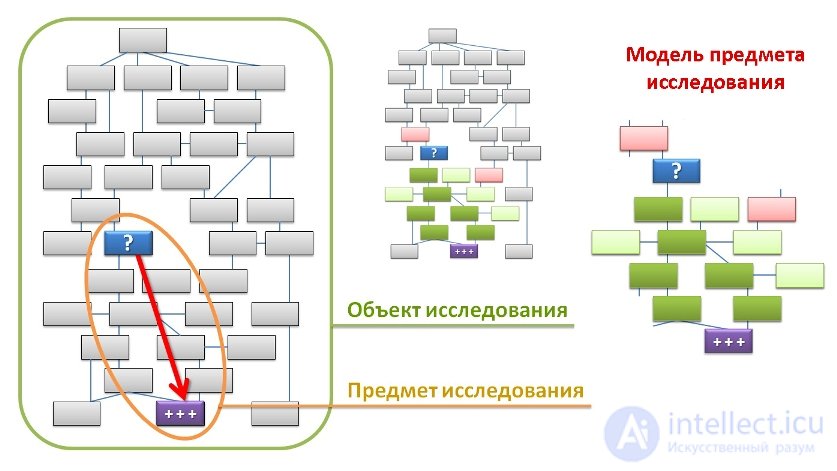
Fig. 2.6. Создание научной модели предмета исследования
Вся система в целом – объект исследования, а связь выделенных компонентов – предмет исследования. Для исследования нужен именно предмет, и чтобы корректно выделить его из объекта, не упустив ничего важного, создаётся модель, в которой можно изменять компоненты системы или изменять её внутреннюю структуру, осмысливая, как те или иные изменения повлияют на предмет исследования.
Итак, моделирование позволяет выделить в объекте исследования наиболее существенное – то, что относится к исследуемому предмету. Создав модель, в дальнейшем можно сосредоточиться на её изучении, теоретически разработать оптимальную систему – и только после этого проверять её в реальных условиях педагогического процесса.
To the top
Использование в педагогическом исследовании математических методов
В группе математических методов, находящих применение в педагогическом исследовании, выделяются методы установления количественных зависимостей , метод вычисления элементарных статистик , а также методы статистического выявления связей .
К методам установления количественных зависимостей относятся регистрация , ранжирование и шкалирование (В.А. Сластенин, И.Ф. Исаев и др.).
Метод регистрации состоит в том, что выявленные при изучении предмета исследования некоторые установленные факты регистрируются: фиксируется определённым образом. Это позволяет накапливать информацию и переводить её в числовые показатели, выявлять не только наличие, но и количество тех или иных явлений, событий, определять их частоту (количество за единицу времени). Например, могут регистрироваться опоздания, пропуски занятий, различные достижения учащихся и педагогов и т.д.
При ранжировании рассматриваемые объекты и явления выстраиваются в определённой последовательности, например: наиболее важным присваивается 1-й ранг, менее важным – 2-й и т.д. Данный метод необходим, когда не существует готовой научно обоснованной методики оценивания изучаемого свойства, так как практически всегда можно использовать ранжирование по скорости выполнения заданий, по количеству допущенных ошибок, по частоте ответов и т.д.
Шкалирование предполагает «введение цифровых показателей в оценку отдельных сторон педагогических явлений» (В.А. Сластенин, И.Ф. Исаев и др.). При шкалировании каждому из выявляемых показателей приписывается определённое количество баллов, и на основе этого составляются шкалы оценивания изучаемого явления по каждому оценочному критерию. Как метод познания управляемого объекта шкалирование позволяет формализовать полученные данные, переводя их в числовые показатели, сравнивать их с существующими нормативами и выявлять отклонения, что существенно облегчает обработку больших массивов информации.
Метод вычисления элементарных статистик позволяет представить управленческие и педагогические явления в абсолютных показателях. Для таких вычислений могут применяться разные формулы. В педагогическом исследовании наиболее распространёнными являются процентные, суммарные и средние арифметические показатели.
К методам статистического выявления связей относятся графопостроение, сравнение элементарных статистик, метод корреляций, факторный анализ и др. Общая особенность этих методов состоит в том, что с их помощью данные обрабатываются статистически, в результате чего выявляются тенденции, степени вероятности прогнозов, уровни значимости влияющих на процесс факторов, совпадения динамики тех или иных параметров изучаемой образовательной системы. Достоверность результатов при использовании методов данной подгруппы зависит от корректности применения соответствующих инструментов (формул, диаграмм, графиков) и правильности выполняемых вычислений. Кроме того, статистически достоверные выводы можно сделать только при анализе достаточно большой выборки данных.
Графопостроение - метод построения графических изображений на основе полученных числовых показателей. Графическими изображениями могут быть различные диаграммы, отражающие тенденцию изменения некоторых показателей за некоторый отрезок времени, зависимость одних параметров от других, а также некоторую последовательность происходящих в управляемой системе изменений.

Fig. 2.7. Пример графического изображения результатов
Например, на рис. 2.7 графики построены по результатам пятнадцати измерений, проведённых через определённые промежутки времени. Верхний график отражает тенденцию стабильного развития, о чём свидетельствует рост показателей либо их кратковременное незначительное снижение, которое восполняется новым ростом при следующем измерении. Можно с высокой вероятностью предсказать результаты следующего (16-го) измерения: показатели будут располагаться в интервале 25-30. Резкий скачок вверх или вниз за пределы этого интервала будет свидетельствовать о существенных изменениях и, возможно, о дестабилизирующих тенденциях в педагогической системе. Иная тенденция прослеживается в нижнем графике. Для данного показателя до сих пор было характерно цикличное колебание. Здесь высока вероятность, что 14-е и 15-е измерения зафиксировали начало нового понижения, и в том случае, если это нежелательно, необходимо принять конрмеры.
Сравнение элементарных статистик – метод, при котором сравниваются одноимённые показатели, полученные по разным критериям, в разных субсистемах, в разные временньíе отрезки существования объекта познания. Основными формами изображения сравниваемых показателей являются таблицы и диаграммы.
Метод корреляций – это метод статистического выявления взаимосвязей между полученными показателями. С его помощью математически определяются зависимости, устанавливаются закономерности, характерные для исследуемого процесса в данных условиях его протекания. Чаще всего в педагогическом исследовании используется простая линейная корреляция (корреляция Пирсона).
Корреляция в данном методе – это связь между признаками, заключающаяся в изменении средней величины одного из них в зависимости от изменения значения другого. Корреляция может быть положительной или отрицательной. Если между двумя сопоставляемыми признаками есть прямая зависимость (с увеличением одного признака возрастает и другой), то можно говорить о положительной корреляции между ними. Если зависимость обратная (с ростом одного признака второй признак уменьшается), то это отрицательная корреляция. Примеры корреляций: при увеличении доли использовании в учебном процессе новой методики повышается самостоятельность учащихся (положительная); но снижается скорость «прохождения материала» (отрицательная).
Главное достоинство метода корреляций состоит в том, что он позволяет выявлять зависимость между, на первый взгляд, не связанными друг с другом показателями. Главный недостаток данного метода – необходимость использования специальных инструментов математической обработки данных (формул, диаграмм и т.п.), а также владения определёнными вычислительными навыками и знания методики корректной интерпретации результатов, что делает его практическое использование довольно сложным.
Факторный анализ – метод статистического выявления структуры эмпирических данных. Его суть состоит в том, что в результате логико-математической обработки большого массива данных из многих компонентов выделяются главные, играющие решающую роль. Эти компоненты являются переменными, отражающими выявленные исходные признаки, и называемые факторами. Переменные при использовании факторного анализа изначально рассматриваются как равноправные, их факторные нагрузки (уровни значимости каждой из переменных) определяется математически.
Использование факторного анализа в педагогическом исследовании позволяет проводить статистический вероятностный анализ воздействия на образовательный процесс различных факторов, прогнозирование их влияния и опережающую коррекцию этого влияния. Иначе говоря, он позволяет установить степень влияния на процесс тех или иных факторов.
В результате факторного анализа выявляются факторы и степень их важности, силы влияния на педагогический процесс. Прокомментируем возможности использования результатов факторного анализа для оптимизации педагогического процесса на примере рис. 2.8 ( Источник: http://biofile.ru/psy/1661.html).
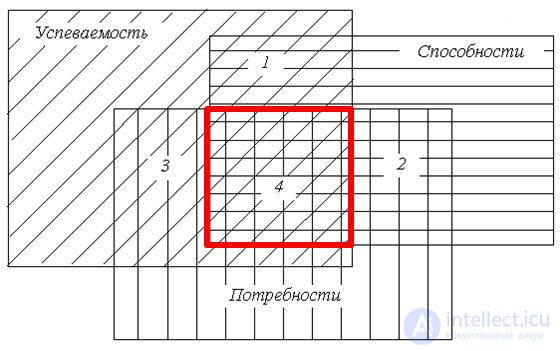
Fig. 2.8. Результат факторного анализа
Where, the well-known factors “overlap”, new synthetic factors arise, which so far have no name and are designated by numbers, but whose influence is decisive. The main (general) factor (4) is also distinguished. If it is determined, substantiated and learned to use, then there is a chance that other factors can be ignored or not given them too much attention, focusing on the main thing.
To the top
Organization of pedagogical research
The organization of pedagogical research is orderliness of pedagogical research methods, specific actions and operations, allowing to achieve results in accordance with the objectives of the study.
Pedagogical research is organized in accordance with scientific logic. The logic of pedagogical research is the sequence of the main stages and procedures, reflecting the movement from setting the research goal to achieving the result [3] (table 2.1.)
Table 2.1.
The stages of scientific and pedagogical research (V.I. Smirnov)
Stage I | General familiarization with the problem of research, justification of its relevance, the level of elaboration, the definition of the object and subject, the research topic. Formulation of the general and intermediate objectives of the study and correlation with the objectives of the tasks. |
Stage II | The choice of methodology - the initial concept, supporting theoretical propositions, a single, defining the course and intended results of the study of the plan, research approach. |
Stage III | Constructing a research hypothesis - a scientifically based assumption that needs further validation. |
Stage IV | The choice of research methods. Conducting an ascertaining experiment to establish the initial state of the subject of the study. |
Stage V | Organizing and conducting a transformative experiment. |
Stage VI | Analysis, interpretation and presentation of research results. |
Stage VII | Development of practical recommendations. |
To the top
Control questions and tasks on the topic "Pedagogical methodology"
1. What is the role of methodology in science?
2. What levels stand out in the methodology of any science?
3. How do the concepts of the methodology of pedagogical science and the methodology of pedagogical activity correlate?
4. Name the methods used to study pedagogical experience.
5. Name the methods of theoretical research.
6. What methods are used in pedagogical research for statistical data processing?
7. What principles should be observed when choosing methods of pedagogical research?
8. What are the stages of pedagogical research?
9. What is the peculiarity of the pedagogical experiment?
10. Why is modeling used in pedagogical research?
[1] A.M. Novikov, D.A. Novikov Methodology. - M .: SINTEG. - 668 s.
[2] See, for example: Slastenin V. A. and others. Pedagogy. - M., 2002.
[3] See: Pedagogy / Ed. P. I. Pidkasistogo. - M., 2000. p. 40-43.
Comments
To leave a comment
Pedagogy and didactics
Terms: Pedagogy and didactics